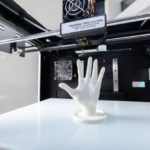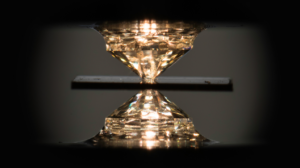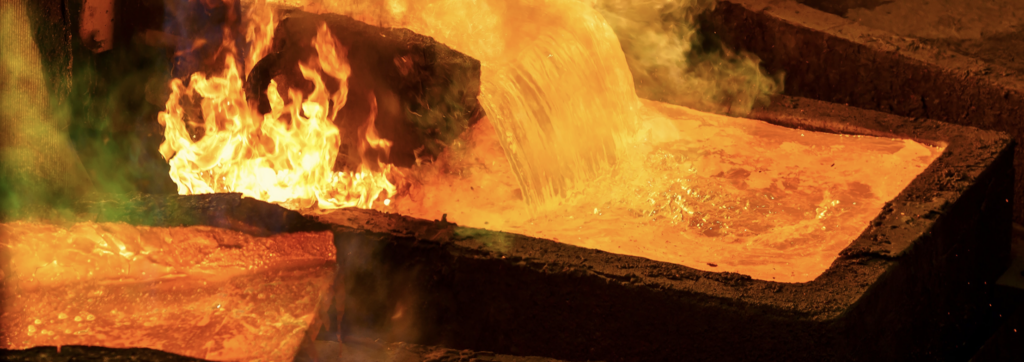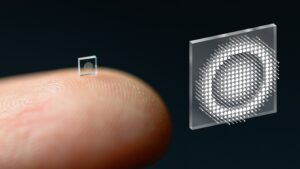- Homepage
- >
- What We Do in Materials Science and Engineering
What We Do in Materials Science and Engineering
and don’t miss What UConn MSE Does.
Take a glimpse at the hands-on opportunities available to UConn Materials Science & Engineering (MSE) students.
Room-Temperature Superconductivity Achieved for the First Time
A team of physicists in New York has discovered a material that conducts electricity with perfect efficiency at room temperature — a long-sought scientific milestone.
Ancient "Technological Powerhouse" Discovered in Israel
Before quantum computing and self-driving cars, a different kind of cutting edge was sweeping the world: metal smithing.
Erick Ordoñez, NASA Materials Engineer
A Day in the Life of Materials Engineer Ellen McIsaac
 Meet Ellen McIsaac, a Materials Engineer for Lockheed Martin. Find out how she got there, a project she’s working on, and how you can #BeThatEngineer!
Meet Ellen McIsaac, a Materials Engineer for Lockheed Martin. Find out how she got there, a project she’s working on, and how you can #BeThatEngineer!
Interview (Part I) with MSE alumna, Dr. Jacquelynn Garofano
Interview (Part II) with MSE alumna, Dr. Jacquelynn Garofano
MSE Senior Design Projects
In their senior year, Materials Science & Engineering students get the chance to put their education and skills to the test with their Senior Design Project, a two-semester course and project that allows for students to work with professors and industry professionals to bring their engineering ideas to life. Seniors gain first-hand experience by designing and building, reaching out to industry leaders and working in a team with other students in their course, while opening the door to job opportunities through business partnerships. Check out some of our students' work in the video below.
Dome Destruction
13 Reasons to Study Materials Science and Engineering
Why Choose Materials Science and Engineering?
How Bad are plastics really?
They’re harmful to health, environment, and human rights—and now poised to dominate this century as an unchecked cause of climate change.
Color-sorting metalenses boost imaging sensitivity
Researchers have shown that newly designed pixel-scale metasurface lenses—flat surfaces that use nanostructures to manipulate light—can be used to make imaging sensors that are roughly three times more sensitive than those used today. The new sensor architecture could enable digital cameras that can image faster or in conditions with less light.
Tesla’s Giga casting strategy to be adopted by half a dozen other automakers
Tesla’s approach to using giant casting machines, nicknamed Giga Press, to make car bodies with just a few massive casted parts is catching on in the auto industry.
Look: "Super Jelly" Experiment defies the laws of physics
The Nanotechnology Revolution Is Here—We Just Haven’t Noticed Yet
For years, engineers have made microchips ever smaller and more powerful. Now they’re applying the technology to a host of miniature marvels.
Materials and nanotechnology: highlights of 2021
Materials and nanotechnology have long attracted some of the best physicists in academia and industry. This year saw some fascinating research done in this field, and in particular work that focused on natural materials and the environment. Here is a selection of some of our favourite materials and nanotechnology research in 2021.
Lasers and molten tin: Inside Intel’s plans for the world’s most advanced chip-making process
After years of manufacturing struggles, Intel has gone all in on extreme ultraviolet lithography to make its most advanced chips. The technology is theoretically precise enough to hit your thumb with a laser pointer from the moon.
Researchers shrink camera to the size of a salt grain
Micro-sized cameras have great potential to spot problems in the human body and enable sensing for super-small robots, but past approaches captured fuzzy, distorted images with limited fields of view.
Researchers at Princeton University and the University of Washington have developed an ultracompact camera the size of a coarse grain of salt. The system relies on a technology called a metasurface, which is studded with 1.6 million cylindrical posts and can be produced much like a computer chip. Credit: Princeton University
Major semiconductor manufacturing investments in the US
From the 400,000 pounds of steel in the solid rocket boosters to the 120,000 pounds of aluminum in the external tank and orbiter, it is easy to see the impact that material choices have on aerospace vehicles such as the Space Shuttle. Read more
Podcast: Neil deGrasse Tyson and co-hosts Chuck Nice and Gary O’Reilly investigate material science and its impact on sports alongside engineer Jud Ready.
What to Do With a Materials Engineering Degree
Materials engineers can work in nearly any industry, ranging from cosmetics to appliances.
What does a Materials Scientist do?
From shoes, to tooth fillings, to solar panels, nearly everything you find in everyday life has been worked on by materials scientists. Find out how these researchers use their know-how to come up with new materials, test their properties, and help improve the future.
What do Materials Scientists do out in the real world?
Whether it's civil engineering for the highways you drive on, metallurgy for the car you drive, or bioengineering for the medical devices that can save your life, Materials Science is present in nearly every field of engineering, and in every aspect of your modern world.
At the Cutting Edge of Nuclear Energy - Advance Materials Development
Chris Grovenor FIMMM, Malcolm Joyce and Francis Livens of the UK’s National Nuclear User Facility Management Group discuss the opportunities for researchers to advance nuclear materials development.
Dramatic Advances In Materials Have Helped Drive The Manufacturing Revolution
What do we take for granted in the broader manufacturing world when it comes to breakthrough materials?
The world’s premier materials library for design and consumer products.
7 Amazing Real-World Examples Of 3D Printing In 2018
 Now that 3D printers are cheaper to produce, experts predict it won’t be long before they are common in our homes. Here are just a few of the amazing real-world examples of 3D printing in 2018.
Now that 3D printers are cheaper to produce, experts predict it won’t be long before they are common in our homes. Here are just a few of the amazing real-world examples of 3D printing in 2018.








